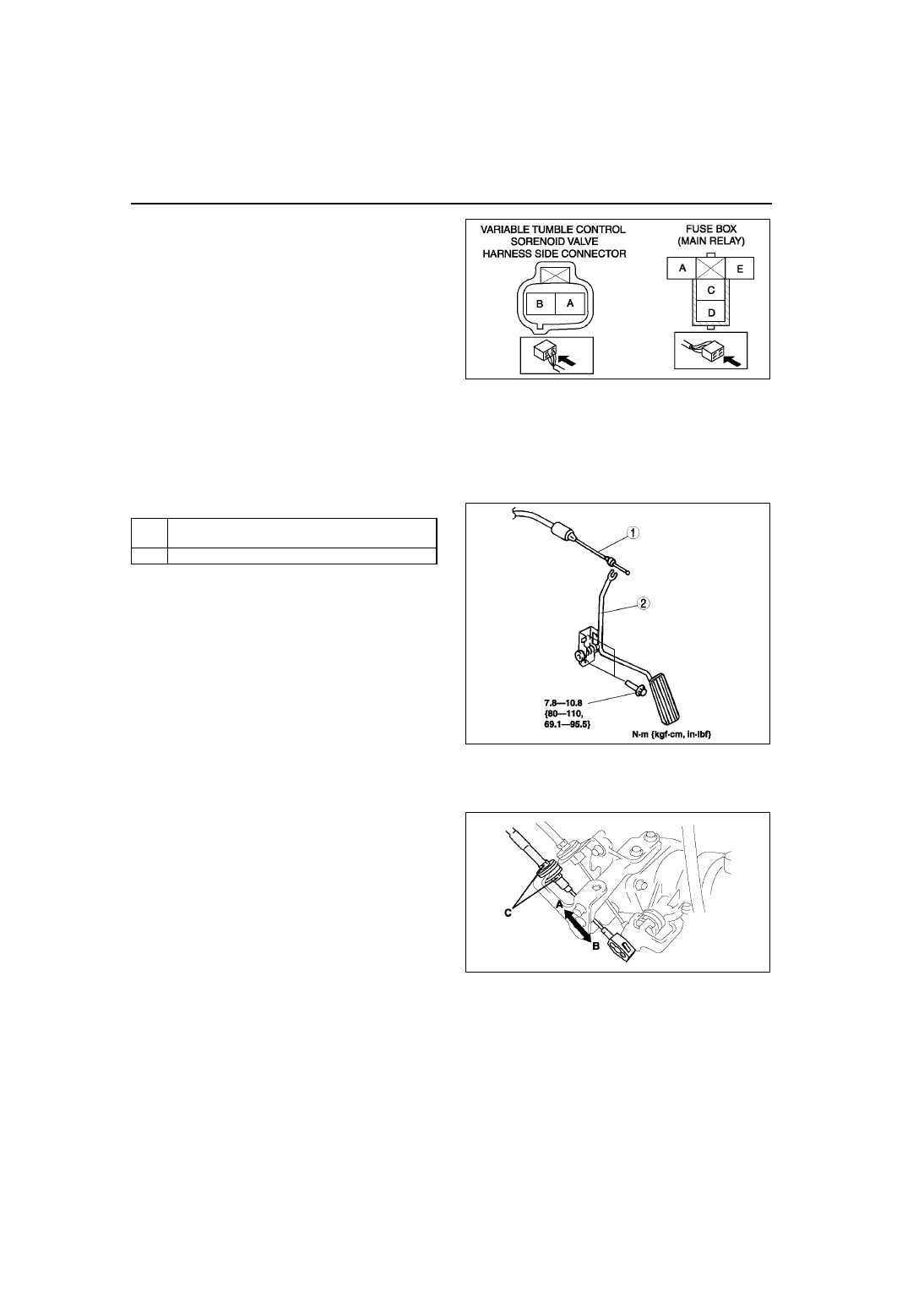Mazda 6. Manual - part 120

F–16
INTAKE-AIR SYSTEM
2. Inspect the following wiring harness for open or
short (continuity check).
Open circuit
• If there is no continuity, the circuit is open. Repair
or replace the harness.
— Variable tumble control solenoid valve
terminal B (harness-side) and PCM terminal
4T
— Variable tumble control solenoid valve
terminal A (harness-side) and main relay
terminal C (harness-side)
Short circuit
• If there is continuity, the circuit is shorted. Repair
or replace the harness.
— Variable tumble control solenoid valve terminal B (harness-side) and body GND
— Variable tumble control solenoid valve terminal A (harness-side) and power supply
End Of Sie
ACCELERATOR PEDAL REMOVAL/INSTALLATION
A6E391041600W01
1. Remove in the order indicated in the table.
2. Install in the reverse order of removal.
.
Accelerator Cable Installation Note
1. Carry out the “ACCELERATOR CABLE
INSTALLATION/ADJUSTMENT” procedure after
installing the accelerator cable. (See
ACCELERATOR CABLE INSPECTION/
ADJUSTMENT
End Of Sie
ACCELERATOR CABLE INSPECTION/ADJUSTMENT
A6E391041660W01
1. Verify that the throttle valve is closed.
2. Pull the accelerator cable in the directions of A
and B, and measure the free play.
• If not as specified, adjust by turning locknut C.
Free play
1.0—3.0 mm {0.04—0.11 in}
Tightening torpue
9.8—14.7 N·m {100—150 kgf·cm, 87—130
in·lbf}
End Of Sie
A6E3910W017
1
Accelerator cable
F–16 Accelerator Cable Installation Note
)
2
Accelerator pedal
A6E3910W033
A6E3910W030